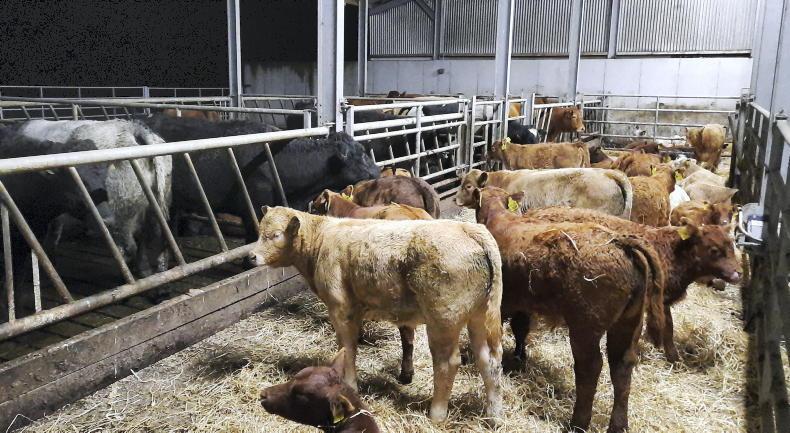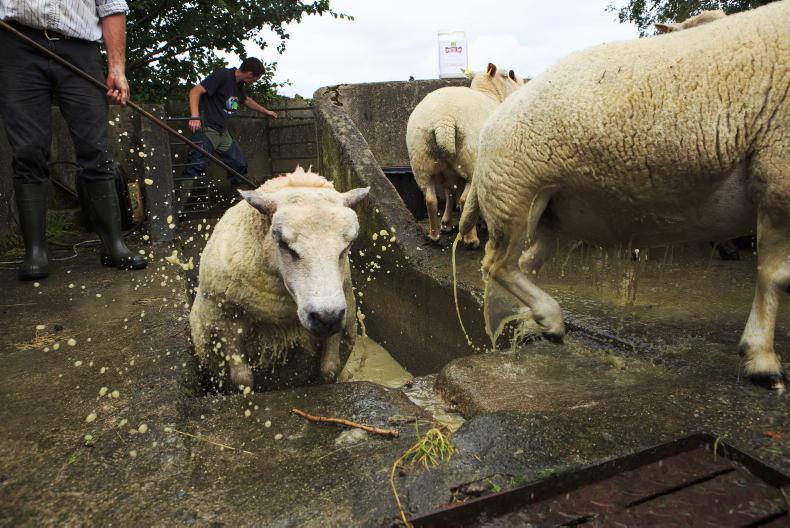The cattle are housed for the winter here in Sligo and have settled in well. The heavy rain in the last weeks of October made the last bit of grazing more difficult and ensured all cows and calves were housed on 31 October.
At that stage, with two weeks of breeding complete, the third week of breeding proceeded indoors. Now with three weeks of breeding complete, all cows apart from two have been submitted for AI.
A mix of bulls including Salers, Charolais and Limousin are selected for use, based upon their overall replacement index, ease of calving and finally carcase traits. I am placing more emphasis on carcase traits this year in order to improve this aspect of the herd.
Vaccinations
All calves receive a pneumonia vaccination against RSV and PI3 viruses intranasally and will receive their first IBR vaccination shot in a few weeks’ time.
This vaccination programme has worked for me for the last number of years and I will certainly be continuing with it for peace of mind.
Calves have also received a dose against coccidiosis, as they will continue to graze paddocks around the shed for the winter period. After a week inside and once the calves had figured out the creep gates and where their mothers’ milk was, I opened the shed doors and let them out to graze.
Silage
The next job was to take silage samples to ensure the winter feed is up to standard and sufficient for feeding the cows and calves without having to add any meals to the diet.

Most of the beef heifers have been slaughtered, with a small number left to finish over the next few weeks. The remaining heifers are also housed and will receive silage and 5kg of meal to finish them before Christmas.
BEAM
Due to the BEAM scheme and a requirement to reduce the nitrogen output from the farm, I also need to review stock numbers on the farm at the end of each month.
A requirement to reduce nitrogen output by 5% in the period July 2020 to June 2021 means no surplus stock can be carried and indeed all stock moving off the farm are being pushed to finish or sold live as quickly as possible.
Cull cows are sold through the mart, which at present is returning more value than slaughtering these cows. I also sold some live heifers that were coming close to finish to reduce numbers on farm.
Scheme measures like this can distort the normal market trading conditions and it will be interesting to see if this sort of market distortion has an impact on cattle prices in the first half of 2021.
Read more
Farmer Writes: we know our TB history better than any report
Farmer Writes: a sunburnt heifer and slow grass growth
The cattle are housed for the winter here in Sligo and have settled in well. The heavy rain in the last weeks of October made the last bit of grazing more difficult and ensured all cows and calves were housed on 31 October.
At that stage, with two weeks of breeding complete, the third week of breeding proceeded indoors. Now with three weeks of breeding complete, all cows apart from two have been submitted for AI.
A mix of bulls including Salers, Charolais and Limousin are selected for use, based upon their overall replacement index, ease of calving and finally carcase traits. I am placing more emphasis on carcase traits this year in order to improve this aspect of the herd.
Vaccinations
All calves receive a pneumonia vaccination against RSV and PI3 viruses intranasally and will receive their first IBR vaccination shot in a few weeks’ time.
This vaccination programme has worked for me for the last number of years and I will certainly be continuing with it for peace of mind.
Calves have also received a dose against coccidiosis, as they will continue to graze paddocks around the shed for the winter period. After a week inside and once the calves had figured out the creep gates and where their mothers’ milk was, I opened the shed doors and let them out to graze.
Silage
The next job was to take silage samples to ensure the winter feed is up to standard and sufficient for feeding the cows and calves without having to add any meals to the diet.

Most of the beef heifers have been slaughtered, with a small number left to finish over the next few weeks. The remaining heifers are also housed and will receive silage and 5kg of meal to finish them before Christmas.
BEAM
Due to the BEAM scheme and a requirement to reduce the nitrogen output from the farm, I also need to review stock numbers on the farm at the end of each month.
A requirement to reduce nitrogen output by 5% in the period July 2020 to June 2021 means no surplus stock can be carried and indeed all stock moving off the farm are being pushed to finish or sold live as quickly as possible.
Cull cows are sold through the mart, which at present is returning more value than slaughtering these cows. I also sold some live heifers that were coming close to finish to reduce numbers on farm.
Scheme measures like this can distort the normal market trading conditions and it will be interesting to see if this sort of market distortion has an impact on cattle prices in the first half of 2021.
Read more
Farmer Writes: we know our TB history better than any report
Farmer Writes: a sunburnt heifer and slow grass growth










SHARING OPTIONS